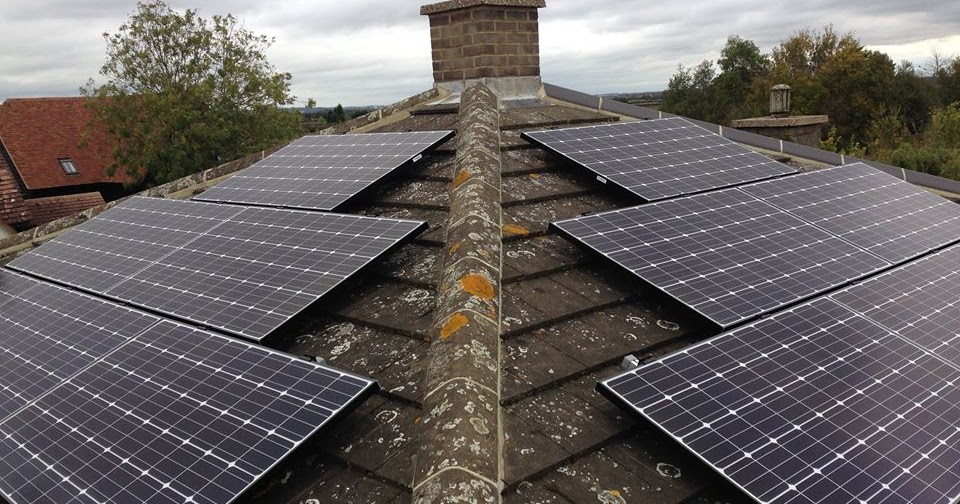Harnessing solar incentives for sustainable residential projects can be a savvy strategy for homeowners, developers, and communities alike. Solar energy offers numerous benefits. It increases your energy cost savings, boosts energy independence, and reduces carbon emissions. By leveraging available incentives, individuals and organizations can also enhance the economic viability of solar installations and accelerate the transition to clean energy.
In this article, you’ll learn the key steps to harness solar incentives effectively for residential projects.
Research Available Incentives

source: procore.com
Understanding available incentives is crucial as it helps homeowners and developers identify potential financial support for their solar projects. By leveraging incentives, the overall cost of solar installation can be significantly reduced, making renewable energy more accessible and financially feasible.
Research federal, state/provincial, and local incentive programs. You can check a dedicated database for state incentives or government websites. Pay attention to the eligibility criteria, application procedures, and deadlines for each program.
For instance, you can research available residential solar incentives in Oregon. In this state, meeting certain solar incentives requires that the area of your property designated for solar installation has a Total Solar Resource Fraction (TSRF) of 80% or higher. TSRF is a metric used in the solar industry to quantify the total amount of sunlight an area will receive over a year.
Understand Eligibility Criteria

source: suntuitysolar.com
Eligibility criteria determine whether a solar project qualifies for incentives, making it essential to understand these requirements upfront to ensure successful participation in incentive programs.
Review the eligibility criteria specified by each incentive program, considering factors such as system size, location, equipment specifications, installer certifications, and project timelines. Ensure compliance with all requirements to maximize the chances of incentive approval.
If you’re a developer planning a residential solar project in New York, you can review the eligibility criteria for the state’s Megawatt Block Incentive Program. You need to confirm that the project size, equipment specifications, and installer certifications meet the program’s requirements.
Calculate Financial Benefits
Calculating the financial benefits of solar incentives helps homeowners and developers assess the economic feasibility and return on investment (ROI) of their solar projects, enabling informed decision-making.
Use solar savings calculators or financial modeling tools to estimate upfront installation costs, ongoing operational savings, payback period, and ROI with and without incentives. Compare various scenarios to determine the most financially advantageous option.
For instance, if you’re a homeowner in Texas, you must evaluate the financial benefits of installing a residential solar energy system, considering available local utility rebates and federal Investment Tax Credit (ITC). This helps you determine that the combined incentives significantly reduce the payback period, making solar energy an attractive investment.
Optimize System Design

source: carolinaservicesinc.com
Optimize your solar energy system’s design to maximize energy production and enhance eligibility for incentives, ensuring optimal performance and financial benefits over the system’s lifespan.
Work with experienced solar professionals to design a system tailored to the specific site conditions, considering factors such as system size, orientation, tilt angle, shading analysis, and equipment selection. Prioritize energy efficiency and compliance with incentive program requirements.
A developer designing a residential solar project in Arizona collaborates with engineers and architects to optimize the system layout, considering the site’s solar access, roof orientation, and potential shading from surrounding structures. By maximizing solar exposure and minimizing shading, they ensure optimal energy production and eligibility for state incentives.
Navigate Application Processes
Navigating the application processes of incentive programs effectively is essential to secure financial support for solar projects in a timely manner, minimizing delays and maximizing incentives.
Know the application procedures outlined by each incentive program, gathering all required documentation and information in advance. Submit a complete application within specified deadlines, following any additional instructions provided by program administrators.
You must compile all necessary documentation, including project proposals, equipment specifications, and installer contracts, and submit the application before the deadline. As a result of thorough preparation and adherence to guidelines, their application is processed efficiently, and they receive the incentive funds accordingly.
Coordinate Financing Options

source: chilternsolar.blogspot.com
Coordinating financing options allows homeowners and developers to overcome upfront cost barriers and leverage incentives effectively, making solar energy more accessible and affordable.
Power purchase agreements, leases, loans, and specialized solar financing programs are just some of the financing options that can be tailored to incentive-specific requirements. Evaluate interest rates, repayment terms, and eligibility criteria to identify the most suitable financing solution.
A homeowner in Massachusetts explores financing options for a residential solar installation, considering both traditional lenders and specialized solar financing programs. After comparing terms and incentives, they opt for a solar loan with favorable interest rates and flexible repayment terms, enabling them to cover upfront installation costs and maximize available incentives.
Monitor Legislative Changes
Monitoring legislative changes ensures homeowners, developers, and communities stay informed about evolving solar incentive programs and relevant policies, allowing them to adapt their strategies accordingly and advocate for supportive measures.
Stay updated on legislative developments through government websites, industry publications, newsletters, and advocacy groups. Engage with policymakers, industry associations, and community organizations to advocate for robust solar incentive programs and favorable renewable energy policies.
A solar advocacy group in Oregon tracks legislative developments related to renewable energy incentives and communicates updates to its members through newsletters and social media channels. When a bill proposing an extension of the state’s solar tax credit is introduced, the group mobilizes its members to voice support for the legislation. This leads to its successful passage and continuation of the incentive program.
Educate Stakeholders

source: pinterest.com
Educating homeowners, developers, and community stakeholders about solar energy benefits and available incentives fosters awareness, understanding, and support for sustainable residential projects, driving broader adoption and impact.
Provide educational materials, workshops, seminars, and outreach events to disseminate information about solar energy advantages, incentive opportunities, and best practices. Tailor messaging to address specific stakeholder interests, concerns, and decision-making factors.
A community organization in Colorado hosts a series of educational workshops on residential solar energy, inviting homeowners, developers, local officials, and utility representatives to participate. Through presentations, case studies, and Q&A sessions, attendees learn about the environmental, economic, and social benefits of solar energy and gain insights into available incentive programs.
Conclusion
Solar energy systems empower homeowners and communities to generate their electricity on-site, reducing reliance on centralized power plants and fossil fuels. Solar incentives significantly reduce the upfront costs associated with installing solar energy systems. This makes renewable energy more financially accessible to homeowners and developers, facilitating the adoption of sustainable practices.


